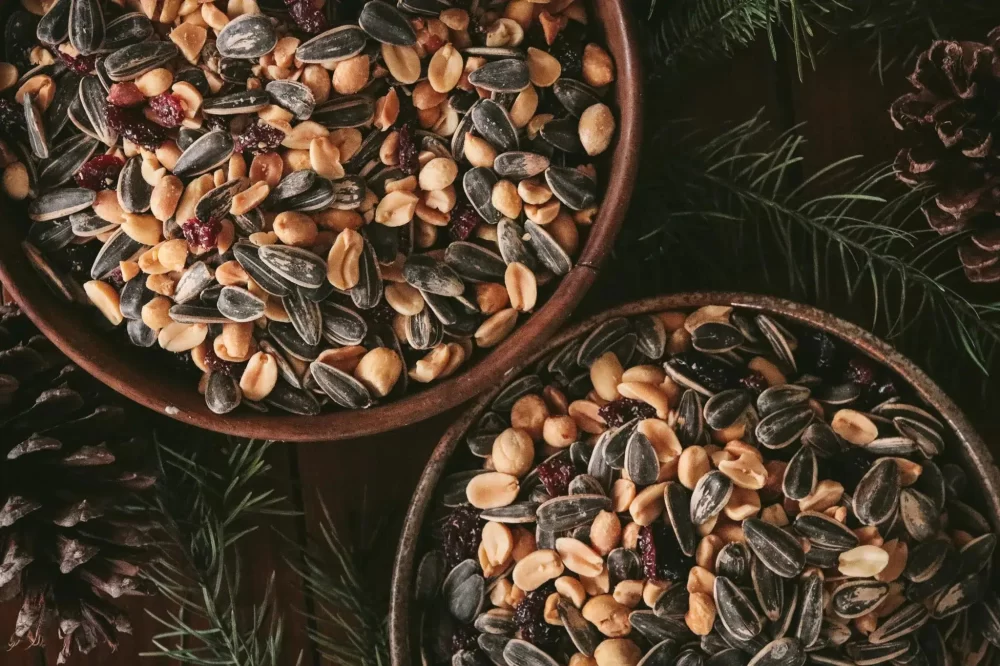- Benefits of Homemade Bird Seed Mixes
- Key Ingredients for Nutritious Bird Seed Recipes
- Step-by-Step Guide to Making Bird Seed Mixes
- Tips for Successful Bird Feeding
- Real-Life Stories from Backyard Bird Enthusiasts
- Professional Advice and Product Recommendations
1. Benefits of Homemade Bird Seed Mixes
Homemade bird seed mixes offer a unique opportunity to provide backyard birds with nutritious, tailored diets that commercial mixes may not fully deliver. By preparing your own blends, you can ensure the quality and variety of ingredients while avoiding fillers and additives often found in store-bought products.
Natural bird food made from homemade mixes supports better bird health, improves feather quality, and encourages longer visits from a diverse range of species. Additionally, crafting your own bird seed mixes can be a rewarding and environmentally friendly activity, allowing you to connect more deeply with nature and local wildlife.
1.1 Environmental and Economic Advantages
Choosing homemade bird seed mixes reduces packaging waste and often costs less than commercial options. You can source local seeds, supporting nearby growers and reducing your ecological footprint. This hands-on approach aligns well with sustainable gardening and wildlife support practices.
2. Key Ingredients for Nutritious Bird Seed Recipes
The success of homemade bird seed mixes hinges on selecting the right ingredients that appeal to a variety of bird species and provide balanced nutrition. Understanding these components helps create a mix that attracts birds while meeting their dietary needs.
2.1 Seeds Preferred by Backyard Birds
Common favorites include sunflower seeds, millet, safflower, and cracked corn. Sunflower seeds, especially black oil sunflower seeds, are rich in fat and protein, making them highly attractive to many species. Millet is ideal for smaller birds like finches and sparrows, while safflower appeals to cardinals and grosbeaks.
2.2 Adding Variety and Nutrients
Including ingredients such as peanuts (unsalted and shelled), dried fruits, or mealworms can enrich the mix. These additions provide extra protein, fats, and carbohydrates that help birds thrive, especially during breeding seasons or harsh weather.
2.3 Avoiding Harmful Components
It’s essential to avoid mixes containing fillers like milo or cracked wheat, which many birds reject and can lead to waste or even digestive issues. Also, steer clear of salted or flavored seeds to ensure bird safety.
3. Step-by-Step Guide to Making Bird Seed Mixes
Creating your own homemade bird seed mixes is straightforward and customizable. Here’s a detailed process to follow:
3.1 Assess Your Local Bird Population
Observe the types of birds visiting your yard and research their preferred foods. This insight helps tailor your mix to attract the species you want to support.
3.2 Gather Ingredients
Purchase high-quality seeds from trusted suppliers or organic sources when possible. Combining several seed types increases appeal and nutritional balance.
3.3 Mix Proportions Carefully
A balanced mix might consist of 40% black oil sunflower seeds, 20% millet, 15% cracked corn, 15% safflower, and 10% peanuts or dried fruits. Adjust according to bird preferences and seasonal needs.
3.4 Store Properly
Keep your homemade mixes in airtight containers to maintain freshness and prevent mold or pests. Proper storage also preserves nutrient quality.
4. Tips for Successful Bird Feeding
Beyond the mix itself, how you present food greatly impacts bird visits and health.
4.1 Use Appropriate Feeders
Select feeders that suit your bird mix and target species. For example, tube feeders work well with small seeds like millet, while platform feeders accommodate larger seeds and fruit pieces.
4.2 Maintain Cleanliness
Regularly clean feeders and feeding areas to prevent disease spread among birds. Hygiene promotes a healthy bird population and encourages repeated visits.
4.3 Seasonal Adjustments
Modify your homemade bird seed mixes based on seasonal availability and bird needs. During winter, increase high-fat seeds to help birds maintain energy in cold weather.
5. Real-Life Stories from Backyard Bird Enthusiasts
One bird lover, Emma from Oregon, shared how switching to homemade bird seed mixes transformed her garden. She noticed more variety and longer feeding visits, including the arrival of elusive woodpeckers and finches. Emma’s personalized blends, combined with natural feeders, created a thriving backyard habitat that continues to flourish year after year.
Such stories underline the joy and success achievable by engaging in homemade bird feeding projects.
6. Professional Advice and Product Recommendations
For those seeking further guidance or specialized products, Hidden Brook Veterinary provides expert advice on bird nutrition and health. Their curated selection of bird seed ingredients, feeders, and supplements ensures that backyard enthusiasts can offer optimal nourishment and care.
Whether you’re new to bird feeding or an experienced enthusiast, consulting professionals and using high-quality products enhances your experience and supports the well-being of the birds you attract.












